AI Chatbots for Customer Service Success in 2025
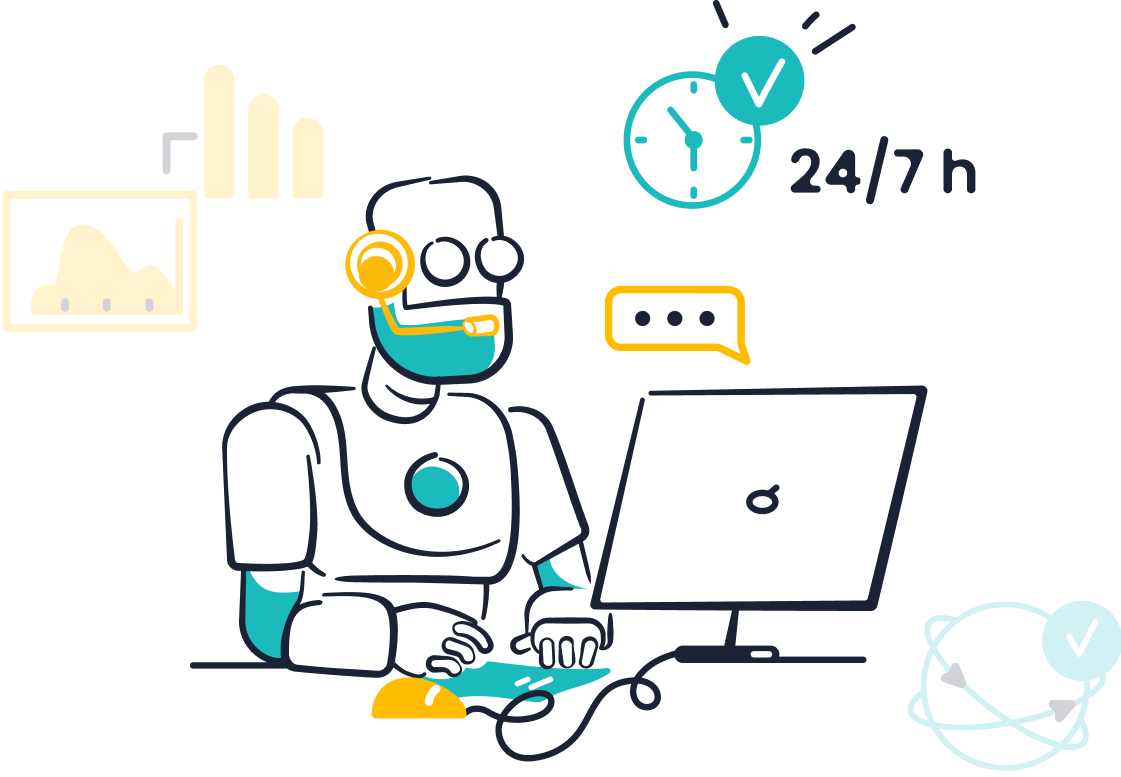
Imagine a world where your customers never have to wait for support, no matter the time of day. AI is making this a reality. By 2025, nearly 95% of all customer interactions will be handled by AI, showcasing its growing dominance in customer service. Businesses like yours are already reporting massive benefits—cost savings, faster resolutions, and happier customers. For instance, companies like NIB have saved millions by automating processes, while AI chatbots now manage 80% of routine tasks, freeing up human agents for critical issues.
So, why should you care? With 64% of business leaders believing AI will strengthen customer relationships, it’s clear that adopting a customer service AI chatbot solution isn’t just an option—it’s a necessity. Solutions like Sobot empower you to stay ahead, offering efficiency, personalization, and the ability to meet rising consumer expectations.
The Evolution of AI Chatbots in Customer Service
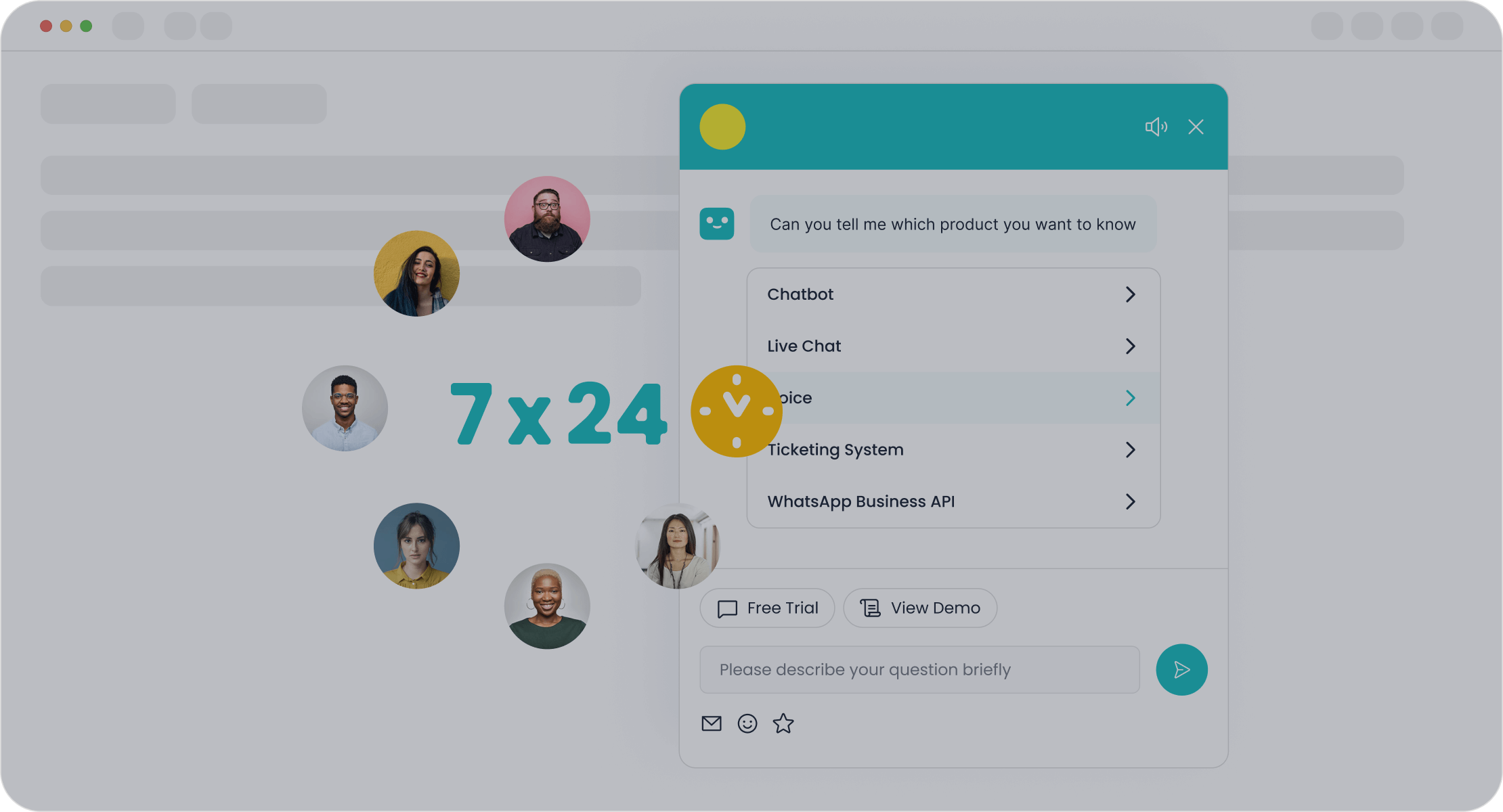
From Rule-Based Bots to Conversational AI
AI chatbots have come a long way since their inception. Early chatbots relied on simple rule-based systems, which could only respond to specific commands. But today, conversational AI has transformed these systems into intelligent, human-like assistants. Let’s take a quick journey through this evolution:
- 1966: ELIZA, the first chatbot, introduced basic pattern recognition for scripted responses.
- 1972: PARRY simulated a paranoid individual, expanding response capabilities and testing the Turing test.
- 1988: Jabberwacky used real-time user interactions to simulate more natural conversations.
- 1992: Dr. Sbaitso demonstrated basic human-like dialogue.
- 2000s: A.L.I.C.E. and SmarterChild advanced chatbot technology with heuristic pattern matching.
- 2011: Siri launched as a voice-controlled personal assistant, marking a leap toward modern conversational AI.
This progression shows how AI has shifted from rigid, rule-based systems to dynamic conversational AI that understands context, intent, and even emotions. Today, these chatbots don’t just answer questions—they engage in meaningful conversations, making customer interactions smoother and more personalized.
Key Milestones in AI Chatbot Development
The journey of AI chatbots is marked by groundbreaking milestones. Here’s a snapshot of some key moments:
| Year | Milestone Description |
|---|---|
| 1966 | Joseph Weizenbaum creates ELIZA, the first chatbot. |
| 2022 | Launch of ChatGPT, an advanced conversational AI model. |
| 2023 | Introduction of GPT-4, further advancing chatbot capabilities. |
These milestones highlight how AI has continuously evolved to meet the growing demands of customer service. From basic scripted responses to advanced conversational AI models like GPT-4, chatbots have become indispensable tools for businesses.
The Role of AI in Enhancing Customer Support Efficiency
AI has revolutionized customer support by making it faster, smarter, and more efficient. Metrics like response time, ticket volume handled, and customer satisfaction (CSAT) scores demonstrate its impact. For example, a leading pet tech company reduced response time by 30% after integrating an AI agent assistant. Similarly, a European consumer tech leader automated 50% of inbound conversations within a week, significantly improving efficiency and reducing negative feedback.
AI-powered chatbots handle repetitive tasks, allowing human agents to focus on complex issues. They also operate 24/7, ensuring customers get instant support anytime. With features like real-time intent recognition and multilingual capabilities, conversational AI delivers personalized experiences that boost customer satisfaction and loyalty.
Top AI Chatbot Solutions for Customer Service in 2025
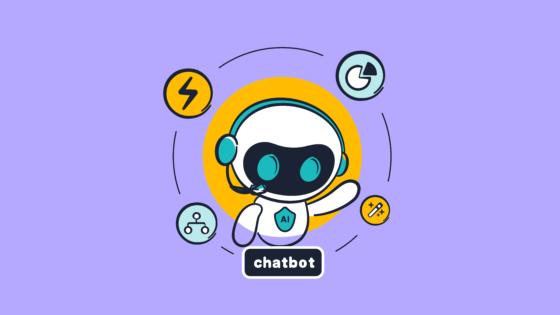
Sobot Chatbot: Features and Unique Selling Points
When it comes to the best AI chatbots for customer service, Sobot stands out as a game-changer. Designed to enhance efficiency and customer satisfaction, the Sobot AI Chatbot offers a comprehensive customer service AI chatbot solution that’s perfect for businesses of all sizes. Its unique features and proven results make it a top choice for 2025.
Here’s what makes Sobot exceptional:
- Omnichannel Support: Sobot connects with your customers across platforms like WhatsApp, SMS, and email, ensuring seamless communication.
- 24/7 Availability: It operates round the clock, solving queries instantly and autonomously.
- Multilingual Capabilities: With support for multiple languages, Sobot ensures no customer feels left out.
- No Coding Required: Its intuitive point-and-click interface allows you to set up workflows effortlessly.
- Smart Self-Service: By proactively assisting customers, Sobot boosts conversion rates by 20%.
The numbers speak for themselves. Businesses using Sobot have seen remarkable improvements:
| Case Study Description | Performance Metrics |
|---|---|
| Reduced inbound discussion volume by 20% and increased positive feedback to 96%+ | 20% reduction in inbound volume, 96% positive feedback |
| Over 80% of answers are correct, 95% customer satisfaction | 80% correct answers, 95% satisfaction |
| 22.2% of questions answered autonomously, CSAT score of 97% | 22.2% self-service, 97% CSAT |
| 85% of problems solved, 99% customer happiness | 85% problem resolution, 99% happiness |
| Sign-off rate increased by 35%, COD collection rate increased by 40% | 35% sign-off increase, 40% COD collection increase |
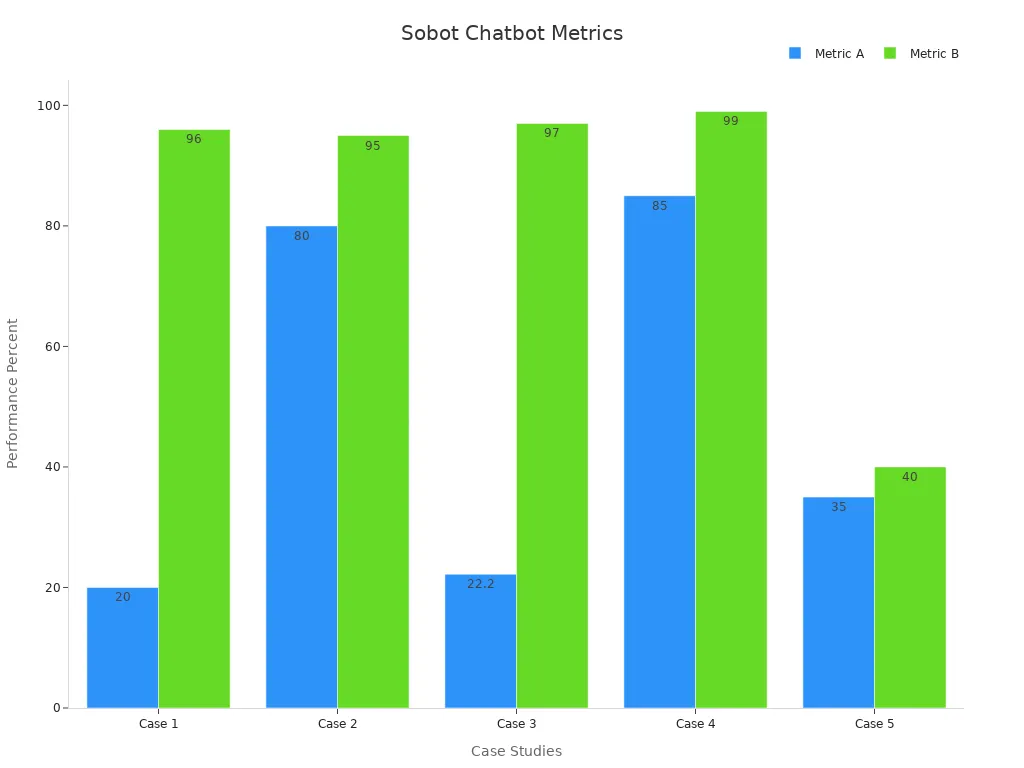
Sobot doesn’t just improve efficiency—it transforms your customer service experience. With its ability to handle repetitive tasks, it frees up your agents to focus on complex issues. Plus, its customizable nature helps businesses gain 30% more leads while cutting service costs by up to 50%.
If you’re looking for a solution that combines innovation, reliability, and measurable results, Sobot is the answer. Learn more about Sobot’s chatbot here.
Nextiva: Features and Unique Selling Points
Nextiva has made a name for itself in the world of AI chatbots for customer service. Its AI-powered contact center is designed to create exceptional customer experiences by combining intelligent virtual agents with advanced call analytics.
Here’s why Nextiva is worth considering:
- Human-Like Interactions: Nextiva’s chatbots use AI to understand and respond to messages naturally, making conversations feel personal.
- Intelligent Virtual Agents: These agents handle routine tasks, allowing your team to focus on high-priority issues.
- Call Analytics: By analyzing customer interactions, Nextiva provides actionable insights to improve service quality.
From 2019 to 2021, AI chatbots improved customer service efficiency by 2,350% in interactions through WhatsApp. During the same period, new customer adoption increased by 1,590%, and the problem-solving rate improved by 19%. These numbers highlight the transformative power of AI chatbot solutions like Nextiva.
If you’re aiming to enhance customer engagement and streamline operations, Nextiva’s chatbot solution is a strong contender.
Zendesk Chat: Features and Unique Selling Points
Zendesk Chat is another leading player in the AI chatbot space, offering a robust customer service AI chatbot solution. Its advanced features make it a popular choice for businesses looking to improve customer support.
Key features of Zendesk Chat include:
- Answer Bot: Provides instant responses to common queries, reducing wait times.
- Intelligent Ticket Routing: Ensures customer inquiries reach the right agent quickly.
- Predictive Analytics: Helps businesses anticipate customer needs and improve satisfaction.
- Multilingual Support: Breaks language barriers to serve a global audience.
- Omnichannel Integration: Connects seamlessly across platforms for a unified customer experience.
Zendesk’s pricing starts as low as $1.00 per automated resolution, making it an affordable option for businesses of all sizes. It also offers a 14-day free trial, so you can explore its capabilities risk-free.
| Software | Starting price | Free trial | Key features |
|---|---|---|---|
| Zendesk | As low as $1.00 per automated resolution | 14 days | AI-powered insights, Multilingual, API integrations, Omnichannel support, Safety and security certifications, Purpose-built for CX, Fast time to value |
| HubSpot | $0 per user/month (limited tools) | Unavailable | API integrations, Omnichannel support, Safety and security certifications |
| Intercom Fin | $29 per user/month and 0.99 per resolution (billed annually) | 14 days | AI-powered insights, Multilingual, API integrations, Omnichannel support, Safety and security certifications |
Zendesk’s ability to combine affordability with advanced features makes it a strong competitor in the AI chatbot market. Its focus on predictive analytics and intelligent routing ensures your customers receive the best possible support.
Intercom: Features and Unique Selling Points
Intercom has established itself as a leader in the AI chatbot space, offering innovative solutions that redefine customer service. Its platform combines conversational AI with automation to deliver seamless customer interactions. Here’s why Intercom stands out:
- Conversational AI Excellence: Intercom’s chatbots are designed to engage in natural, human-like conversations. They understand context and intent, making interactions feel personal and meaningful.
- Proactive Support: The platform doesn’t just wait for customers to reach out. It anticipates their needs and offers proactive assistance, improving satisfaction and loyalty.
- Customizable Workflows: Intercom allows you to tailor workflows to your business needs, ensuring a personalized experience for every customer.
- AI-Powered Insights: With advanced analytics, Intercom helps you understand customer behavior and optimize your support strategies.
The impact of Intercom’s AI solutions is undeniable. Take a look at these statistics that highlight its effectiveness:
| Statistic | Source |
|---|---|
| 78% of support leaders expect AI to transform customer support careers. | Intercom |
| 79% of customer service professionals say AI and automation tools are important. | HubSpot |
| 73% of support leaders believe customers will expect AI-assisted service. | Intercom |
| 61% have seen improvements to customer experience after investing in AI. | Intercom |
| 65% bot deflection rate achieved with Intercom's solution. | Intercom |
| 81% of support leaders believe automated tools improve employee experience. | Intercom |
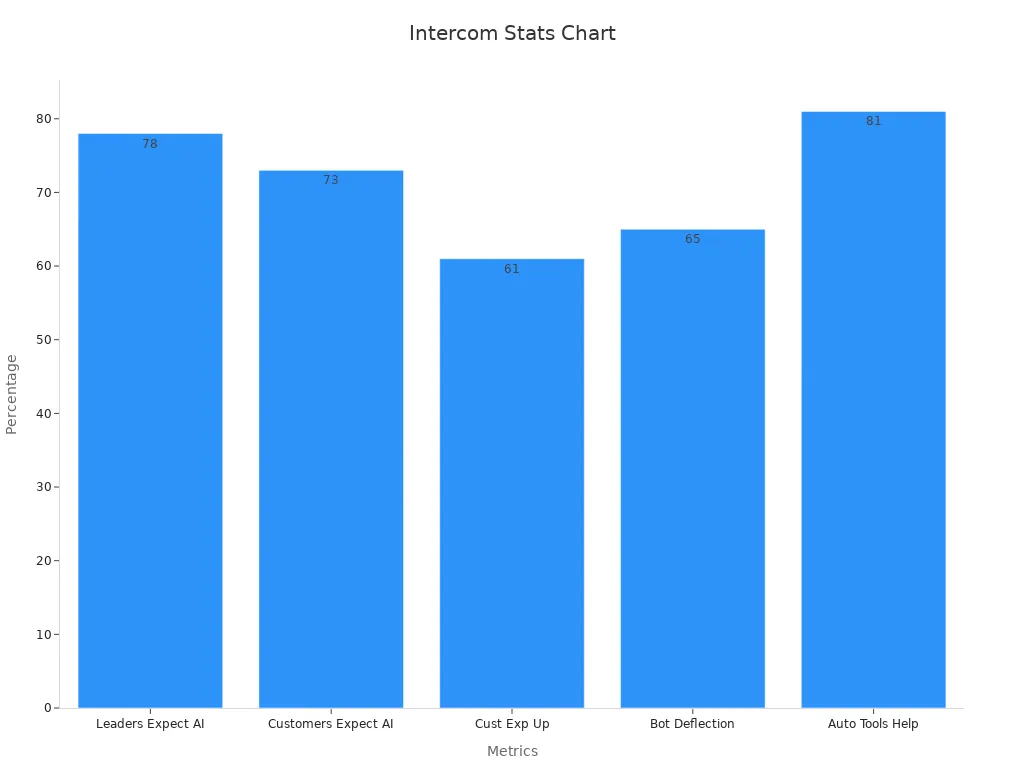
Intercom’s ability to combine conversational AI with actionable insights makes it a powerful tool for businesses. Whether you’re looking to improve efficiency, enhance customer satisfaction, or empower your team, Intercom delivers results.
Yellow.ai: Features and Unique Selling Points
Yellow.ai is another top contender in the AI chatbot market, offering a platform that excels in scalability and customer engagement. Its solutions are designed to meet the demands of modern businesses, ensuring high-quality customer service at every stage.
Here’s what makes Yellow.ai a standout choice:
- Scalable Customer Support: Yellow.ai grows with your business, maintaining service quality without requiring significant additional resources.
- Sentiment Analysis: The platform understands customer emotions, allowing you to respond empathetically and boost satisfaction.
- Efficient Query Resolution: Yellow.ai handles multiple queries simultaneously, ensuring quick and accurate responses.
- Task Automation: By automating repetitive tasks, Yellow.ai frees up your team to focus on complex issues, improving overall efficiency.
| Feature | Benefit |
|---|---|
| Scalable customer support | Ensures high-quality service as the business grows without significantly increasing resources. |
| Sentiment analysis | Enhances customer interactions by understanding emotions, boosting satisfaction and CSAT scores. |
| Resolving frequent queries | Handles multiple customer queries simultaneously, ensuring prompt and accurate responses. |
| Automating tedious tasks | Frees up team resources for specialized issues, reducing burnout and improving efficiency. |
Yellow.ai’s platform is built to adapt to your business needs. It ensures that your customers receive consistent, high-quality support, no matter how much your business grows. With features like sentiment analysis and task automation, Yellow.ai not only improves efficiency but also enhances the overall customer experience.
If you’re looking for a solution that combines scalability, empathy, and efficiency, Yellow.ai is a strong choice for 2025.
Benefits of Implementing AI Chatbots in Customer Service
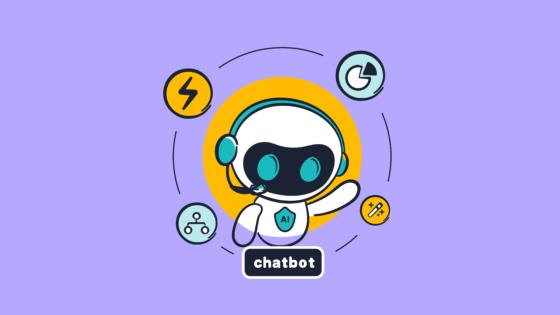
Enhanced Customer Experience and Personalization
AI chatbots have revolutionized the way businesses interact with customers by delivering a personalized experience. They don’t just answer questions—they tailor responses based on customer preferences, past interactions, and real-time needs. Imagine visiting a store where the assistant already knows your favorite products. That’s the kind of personalized customer service AI chatbots provide.
- 52% of customers expect offers to be tailored to them.
- 71% want companies to deliver personalized interactions, and 76% feel frustrated when this doesn’t happen.
- 77% are willing to pay more for brands that offer a personalized experience.
These numbers highlight the growing demand for personalization. Businesses that embrace AI-powered chatbots can meet these expectations while improving customer satisfaction. The personalization software market is expected to grow by 23% by 2027, showing how critical this trend is for staying competitive.
24/7 Availability and Faster Response Times
AI chatbots never sleep. They’re available 24/7, ensuring your customers always get the support they need, no matter the time. Whether it’s a simple query or a quick order, chatbots handle it instantly. This constant availability not only improves customer experience but also builds trust.
Here’s how businesses benefit:
- Starbucks’ virtual assistant cut wait times by 50%, boosting satisfaction.
- Bank of America’s Erica AI assistant reduced wait times by 40%.
- Domino’s Pizza’s chatbot improved order accuracy and reduced delays.
Chatbots also excel at faster resolutions. They handle simple issues immediately, leaving your human agents free to focus on complex problems. Metrics like higher Customer Satisfaction Scores (CSAT) and lower Customer Effort Scores (CES) prove how effective they are at improving customer support.
Cost-Effectiveness and Operational Efficiency
AI chatbots are a game-changer for cost savings and efficiency. They can manage up to 80% of routine customer queries, reducing the need for additional agents. This translates to a 30% reduction in customer service costs. Plus, chatbots scale effortlessly, handling unlimited interactions without increasing expenses.
| Evidence Type | Details |
|---|---|
| Cost Savings | Manage 80% of routine queries, cutting service costs by 30%. |
| Increased Revenue | Enhanced customer satisfaction leads to higher revenue returns. |
| Scalability Benefits | Handle unlimited interactions, supporting business growth efficiently. |
Research shows that businesses using AI chatbots can save up to $80 billion across industries. They also resolve 58% of customer tickets with an 87% success rate. By automating repetitive tasks, chatbots free up resources, allowing your team to focus on strategic goals. This combination of cost-effectiveness and operational efficiency makes them indispensable for modern customer service.
Scalability for Growing Business Needs
As your business grows, so do your customer service demands. That’s where AI chatbots shine. They’re built to scale effortlessly, handling increasing volumes of interactions without breaking a sweat. Whether it’s a holiday sale or a product launch, chatbots ensure your customers always get the support they need.
Imagine this: during peak shopping seasons, your team might struggle to keep up with the flood of inquiries. AI chatbots solve this problem by managing multiple conversations at once. They don’t just answer questions—they do it instantly and consistently, no matter how many customers are reaching out. This means your team can focus on more complex tasks while the chatbot takes care of the rest.
Here’s how chatbots make scaling simple:
- They handle simple tasks like FAQs, freeing up your agents for high-priority issues.
- They address multiple customer inquiries simultaneously, ensuring no one is left waiting.
- They maintain consistent service quality, even during the busiest times.
This scalability isn’t just about managing more interactions. It’s about doing it efficiently. AI chatbots work 24/7, so your customers never have to wait for help. Plus, they adapt to your business needs, growing alongside you without requiring additional resources.
By integrating AI into your customer service strategy, you’re not just preparing for growth—you’re setting the stage for success. With chatbots, you can meet rising customer expectations while keeping your operations smooth and cost-effective. That’s the power of scalability.
Challenges in Adopting AI Chatbots and How to Overcome Them
Integration with Existing Systems
Integrating a chatbot into your existing business systems can feel like solving a complex puzzle. Compatibility issues with CRM platforms, data synchronization challenges, and ensuring smooth workflows are common hurdles. For example, ensuring a seamless handoff between chatbots and human agents is critical. Customers expect continuity, especially when their issues require escalation.
Regular updates are another challenge. Chatbots need fresh information to stay relevant and accurate. Without this, they risk providing outdated responses, which can frustrate customers.
| Challenge | Percentage | Source |
|---|---|---|
| Data readiness | 47% | Accenture |
| AI skill shortages | 60% | Salesforce |
| Transparency and explainability | 44% | Stanford AI Index |
To overcome these challenges, start by choosing a chatbot solution that integrates easily with your systems. Sobot, for instance, offers omnichannel support and seamless workflows. Also, ensure your chatbot can learn continuously by updating its knowledge base regularly. This keeps it accurate and helpful.
Ensuring Data Privacy and Security
Data privacy is a top concern when deploying AI chatbots. Customers trust you with their sensitive information, and any breach can damage that trust. Risks like identity theft and data misuse make security measures essential.
To protect customer data, follow these steps:
- Use encryption to secure data during transmission and storage.
- Comply with regulations like GDPR and HIPAA, especially if you operate in healthcare or finance.
- Regularly audit your chatbot’s security features to identify vulnerabilities.
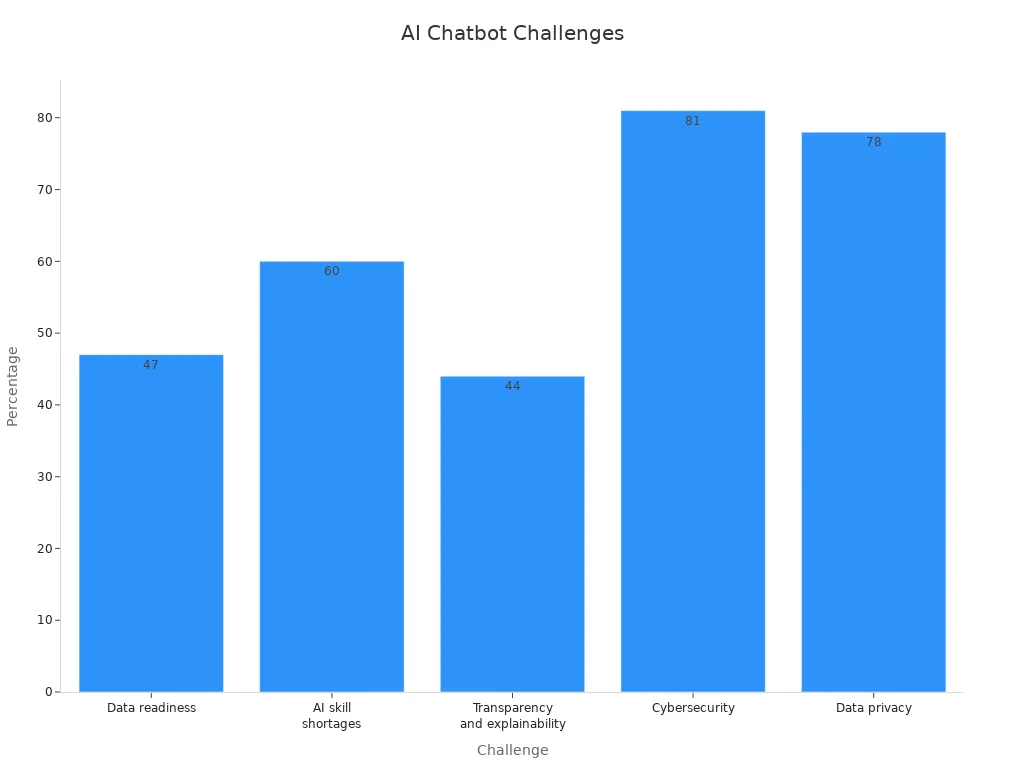
By prioritizing security, you not only protect your customers but also build trust in your AI-powered customer service.
Overcoming Customer Resistance to AI Interactions
Some customers hesitate to interact with AI. They might worry about losing the human touch or doubt the chatbot’s ability to solve their problems. This resistance often stems from a lack of understanding or trust in AI.
To address this, focus on education and transparency. Explain how your chatbot works and highlight its benefits. For example:
- Communicate the advantages of AI early and consistently.
- Involve your team in the adoption process to reduce fear of the unknown.
- Train your agents to work alongside AI, ensuring a balanced workflow.
When customers see how AI enhances their experience, they’re more likely to embrace it. A well-trained chatbot, like Sobot, can handle repetitive tasks while your agents focus on complex issues. This collaboration ensures a smooth and satisfying customer support experience.
Training and Maintenance of AI Chatbots
Training and maintaining an AI chatbot is like nurturing a growing plant. You need to provide the right care and attention to ensure it thrives and delivers the best results for your customer service. But how do you do that effectively? Let’s break it down.
First, start with diverse and extensive training data. The more variety your chatbot gets exposed to, the better it becomes at understanding different customer queries. Think of it as teaching a child—exposure to various scenarios helps them learn faster. Next, keep your chatbot’s knowledge base up-to-date. Customers’ needs change over time, and your chatbot should stay current to meet those expectations.
Feedback is another powerful tool. Encourage users to share their experiences. Use this feedback to identify areas where your chatbot might be falling short. For example, if customers frequently report incorrect responses, you can tweak the chatbot’s training to address those gaps. A/B testing also works wonders. By testing different response patterns, you can figure out what works best for your audience.
Transfer learning is another game-changer. It allows you to adapt pre-trained AI models to your specific use case. This saves time and ensures your chatbot is ready to handle industry-specific queries. Regular optimization is key too. AI chatbots aren’t “set it and forget it” tools. They need continuous fine-tuning to stay efficient and relevant.
Lastly, don’t forget maintenance. Monitor your chatbot’s performance regularly. Look at metrics like response accuracy and resolution rates. If something seems off, address it immediately. A well-maintained chatbot not only improves customer satisfaction but also boosts your customer service efficiency.
By following these steps, you’ll ensure your AI chatbot remains a reliable and effective part of your customer service strategy. It’s all about staying proactive and keeping your chatbot in top shape.
Preparing for the Future of AI Chatbots in Customer Service
Investing in the Right AI Technologies
Choosing the right AI technologies is essential for staying ahead in customer service. The right tools can help you reduce costs, improve customer satisfaction, and boost productivity. For example, AI can automate routine tasks, allowing your team to focus on more meaningful work. It also provides instant support, which speeds up resolution times and enhances the user experience.
Here’s a quick look at the benefits of investing in effective AI chatbots:
| Benefit | Description |
|---|---|
| Decrease costs | Automates routine tasks, reducing the need for additional agents. |
| Improve customer satisfaction | Offers 24/7 support, cutting wait times and keeping customers happy. |
| Boost agent efficiency | Handles repetitive tasks, letting agents focus on complex issues. |
| Increase productivity | Provides instant responses, improving overall efficiency. |
| Optimize operations | Identifies tasks suitable for automation, streamlining workflows. |
| Personalize experiences | Shares insights with agents, enabling tailored solutions. |
| Handle high support demand | Manages large volumes of customer interactions across multiple channels. |
By investing in AI, you’re not just enhancing customer service—you’re preparing for the future of AI chatbots and their growing role in customer interactions.
Training Teams to Work Alongside AI
AI isn’t here to replace your team—it’s here to work with them. To make this partnership successful, you need to train your team to use AI effectively. Start by identifying the skills they need. Then, customize training programs to match their roles and learning preferences.
Here are some tips for training your team:
- Assess their needs to identify the AI skills they require.
- Use a mix of learning platforms, like e-learning and instructor-led training.
- Encourage certifications to validate their skills.
- Collect feedback to improve training programs.
- Monitor their performance to ensure they’re applying what they’ve learned.
When your team knows how to use AI tools, they’ll feel more confident and productive. This leads to better customer interactions and a smoother workflow.
Monitoring and Optimizing Chatbot Performance
Even the best AI chatbots need regular monitoring to perform at their best. Keep an eye on key metrics like response time, user feedback, and error rates. These metrics help you spot issues and make improvements.
Here are some important metrics to track:
| Metric | Description |
|---|---|
| No Response Rate | Tracks how often the chatbot fails to respond. |
| User Feedback and Sentiment | Measures customer satisfaction based on their interactions. |
| User Intent Categorization | Identifies areas where the chatbot struggles to understand users. |
| Resource Utilization | Monitors wasted resources, like unused tokens in responses. |
| Responsible AI and Ethics | Ensures the chatbot follows ethical guidelines in its interactions. |
Regular optimization ensures your chatbot stays relevant and effective. It also helps you maintain a high level of customer satisfaction. By monitoring performance, you can make sure your chatbot continues to deliver personalized recommendations and seamless integration into your customer support strategy.
Staying Ahead of Emerging Trends in AI and Customer Service
Staying ahead in customer service means keeping up with the latest trends in AI. The future is all about smarter, faster, and more personalized interactions. But how do you prepare for what’s coming next? Let’s explore some emerging trends shaping the future of AI in customer service.
One major trend is the rise of generative AI. This technology is transforming how businesses train their teams and assist customers. For example, generative AI can create realistic training scenarios, helping your team handle unique customer issues with confidence. It also powers real-time call scripts, giving agents the right information at the right time. This means faster resolutions and happier customers.
Another exciting development is AI-driven personalization. Imagine a chatbot that knows what your customer needs before they even ask. By analyzing data, AI can predict customer preferences and deliver tailored solutions. This proactive approach not only solves problems but also builds trust and loyalty.
Here’s a quick look at some key trends:
| Trend | Description |
|---|---|
| Generative AI-based training | Enhances customer service training by simulating unique scenarios, allowing reps to handle diverse customer issues more effectively. |
| AI-driven personalization | Enables organizations to proactively meet customer needs through personalized communications, improving satisfaction before issues arise. |
| Generative AI call scripts | Provides real-time updates to customer service agents, enhancing their ability to assist customers with accurate and timely information. |
| Conversational AI bots | Offers a more human-like interaction, allowing for real-time updates and a more engaging self-service experience for customers. |
| AI-driven insights from data | Analyzes extensive customer data to uncover patterns and inform smarter decision-making, enhancing the overall customer experience. |
| Generative AI-based FAQs | Continuously updates FAQs based on real customer interactions, ensuring that the information remains relevant and helpful for customer retention. |
These trends show how AI is evolving to make customer service more efficient and engaging. By adopting these innovations, you can stay ahead of the curve and deliver exceptional experiences. The key is to embrace change and let AI work for you.
Tip: Start small. Implement one or two AI-driven tools, like a chatbot or personalized communication system, and build from there. This way, you can adapt to new trends without overwhelming your team.
The future of customer service is here. Are you ready to lead the way?
AI chatbots have truly redefined customer service, making it faster, smarter, and more personalized. Their ability to handle routine tasks, provide 24/7 support, and deliver tailored experiences has transformed how businesses interact with customers. In fact, chatbot usage grew by 45% in 2021, and by 2023, nearly 69% of consumers expressed satisfaction with their last chatbot interaction. These numbers highlight the growing trust in the role of ai chatbots.
Looking ahead, advancements like voice recognition and machine learning will take these tools to the next level. They’ll not only enhance customer interactions but also free up your team to focus on complex challenges. With 64% of businesses already relying on chatbots for personalized support, it’s clear that embracing this technology is no longer optional. It’s your key to staying competitive and delivering exceptional service.
Pro Tip: Start exploring AI solutions today to future-proof your customer service strategy. The role of ai chatbots will only grow, and now’s the time to lead the way.
FAQ
What is an AI chatbot, and how does it work?
An AI chatbot is a virtual assistant that uses artificial intelligence to interact with users. It understands questions, provides answers, and performs tasks by analyzing text or voice inputs. Think of it as a smart helper that’s always ready to assist.
Can AI chatbots replace human agents?
Not entirely. AI chatbots handle repetitive tasks and simple queries, freeing up human agents for complex issues. They work alongside your team, making customer service faster and more efficient. It’s teamwork, not replacement! 🤝
How do AI chatbots improve customer satisfaction?
AI chatbots provide instant responses, personalized interactions, and 24/7 availability. They reduce wait times and solve problems quickly. Customers feel valued when their needs are met promptly, which boosts satisfaction and loyalty.
Are AI chatbots secure for handling customer data?
Yes, most AI chatbots follow strict security protocols. They use encryption to protect data and comply with regulations like GDPR. Always choose a trusted provider, like Sobot, to ensure your customers’ information stays safe.
Do I need coding skills to set up an AI chatbot?
Not at all! Many AI chatbot platforms, like Sobot, offer no-code solutions. You can design workflows using a simple point-and-click interface. It’s easy, even if you’re not tech-savvy. 🚀
See Also
Enhancing Customer Satisfaction Through Chatbots in E-commerce
Steps to Develop a Successful Chatbot for Websites
The 10 Most Effective Chatbots for Websites This Year